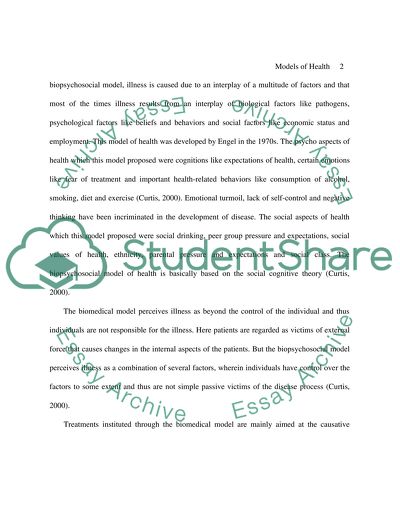Cite this document
(“Discuss two of the following models of health : BIOMEDICAL MODEL, Essay”, n.d.)
Discuss two of the following models of health : BIOMEDICAL MODEL, Essay. Retrieved from https://studentshare.org/miscellaneous/1564434-discuss-two-of-the-following-models-of-health-biomedical-model-lifestyle-theory-social-modellay-definitions-of-health-andor-the-wellness-model
Discuss two of the following models of health : BIOMEDICAL MODEL, Essay. Retrieved from https://studentshare.org/miscellaneous/1564434-discuss-two-of-the-following-models-of-health-biomedical-model-lifestyle-theory-social-modellay-definitions-of-health-andor-the-wellness-model
(Discuss Two of the Following Models of Health : BIOMEDICAL MODEL, Essay)
Discuss Two of the Following Models of Health : BIOMEDICAL MODEL, Essay. https://studentshare.org/miscellaneous/1564434-discuss-two-of-the-following-models-of-health-biomedical-model-lifestyle-theory-social-modellay-definitions-of-health-andor-the-wellness-model.
Discuss Two of the Following Models of Health : BIOMEDICAL MODEL, Essay. https://studentshare.org/miscellaneous/1564434-discuss-two-of-the-following-models-of-health-biomedical-model-lifestyle-theory-social-modellay-definitions-of-health-andor-the-wellness-model.
“Discuss Two of the Following Models of Health : BIOMEDICAL MODEL, Essay”, n.d. https://studentshare.org/miscellaneous/1564434-discuss-two-of-the-following-models-of-health-biomedical-model-lifestyle-theory-social-modellay-definitions-of-health-andor-the-wellness-model.


